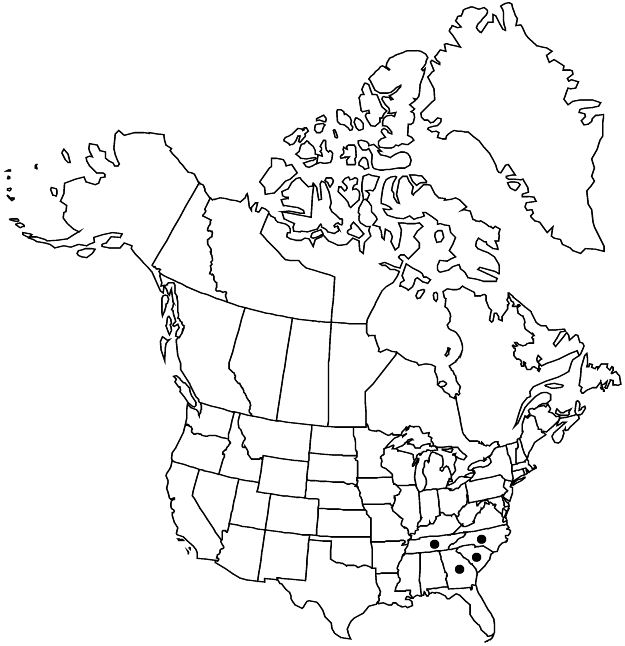Hydrangea radiata
Fl. Carol., 251. 1788.
Shrubs, 10–30 dm. Twigs glabrous or sparsely to densely tomentose, trichomes usually white, sometimes brown or orangish brown. Leaves opposite; petiole (0.7–)1.1–8 cm, glabrous or glabrous abaxially and sparsely to densely tomentose adaxially; blade narrowly to broadly ovate or elliptic, 4–15.2 × 1.3–11.2 cm, unlobed, base truncate to cuneate, margins dentate to serrate, apex acute to acuminate, abaxial surface white or grayish, densely tomentose, trichomes at 40× either smooth, 1–3 mm, or sparsely tuberculate, 0.3–1 mm, adaxial surface green, glabrous or sparsely hirsute along major veins. Inflorescences compact, (100–)200–500-flowered, dome-shaped to hemispheric, 4–13 × 5–14 cm; peduncle 1.6–8.3 cm, sparsely to densely tomentose. Pedicels 0.8–3.2 mm, glabrous or sparsely hirsute. Sterile flowers usually present, rarely absent, white or greenish white, tube 5–14 mm, lobes 3–4(–5), obovate to broadly ovate or round, 5–18 × 3–15 mm. Bisexual flowers: hypanthium adnate to ovary to near its apex, 0.9–1.2 × 1–1.3 mm, strongly 8–10-ribbed in fruit, glabrous; sepals deltate to triangular, 0.3–0.8 × 0.3–0.5 mm, margins entire, apex acute to acuminate, abaxial surface glabrous; petals caducous, white to yellowish white, elliptic to narrowly ovate, 1.2–1.6 × 0.7–1.1 mm; filaments 1.5–4.5 × 0.1–0.2 mm; anthers 0.3–0.5 mm; pistil 2(–3)-carpellate, ovary completely inferior or nearly so; styles 2(–3), distinct, (0.6–)0.9–1.5 mm. Capsules hemispheric, (1.3–)1.7–2.8 × 1.8–3 mm. Seeds 0.3–0.6(–0.8) mm. 2n = 36.
Phenology: Flowering May–Jul.
Habitat: Moist deciduous forests, ravines, banks, rocky slopes, cliffs.
Elevation: 200–1200 m.
Distribution

Ga., N.C., S.C., Tenn.
Discussion
Selected References
None.